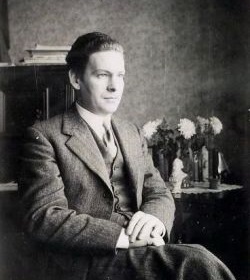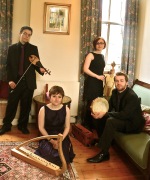Walk the Way
with the Artisans, Vanderbilt and Aykroyd
Medieval music, poetry and prose inspired by the pilgrimage to Santiago de Compostela
Saturday 10 September 2011 • 7.30pm
Stewart's Hall, Huntly
(map)
The Music
|
Instrumental |
Stella Splendens |
|
Cantiga de Santa Maria 100 |
Santa Maria Strela do dia |
|
Cantiga de Santa Maria 160 |
Quen boa dona |
|
Llibre Vermell |
Mariam Matrem |
|
Instrumental |
CSM 383 |
|
Codex Calixtinus |
Annua Gaudia |
|
INTERVAL |
|
|
Codex Calixtinus |
Nostra Phalans |
|
Llibre Vermell |
Inperayritz de la Cuitat Joyosa |
|
Codex Calixtinus |
Alleluya vocavit Jhesus |
|
Llibre Vermell |
Los Set Gotxs |
|
Codex Calixtinus |
Ad Superni |
|
Llibre Vermell |
Cuncti Simus Concanentes |
|
|
|
|
|
The Artisans
Emily Askew (vielle, recorder, bagpipes)
|
We will perform music from the following collections:
Codex Calixtinus
This is an extensive manuscript from Santiago de Compostela, which was attributed to Pope Calixtus II (d.1124). It dates from the mid twelfth century and was intended as a guide, which contained advice and knowledge for pilgrims travelling to the shrine of St James the Great in the cathedral of Santiago de Compostela. The manuscript includes sermons, liturgical texts, a book of miracles credited to St James and a set of devotional songs which are an early example of polyphony.
Cantigas de Santa Maria
One of the largest collections of medieval monophonic vernacular music, the Cantigas de Santa Maria are a set of illuminated manuscripts containing over four hundred songs praising the virtues and miracles of the Holy Virgin. All songs are in Galician-Portuguese language, which was the language of Iberian medieval poetry.
This thirteenth century collection was compiled under orders from Alfonso X el sabio (the Wise), King of Castile and Leon 1252-1284. Cultural and artistic life in thirteenth century Spain had strong Muslim and Judaic influences, which was reflected in Alfonso's court. Although the songs are Christian, the illustrations from the CSM manuscripts depict musicians in typically Christian, Islamic, and Jewish attire performing on their instruments.
Every tenth cantiga is a Loor which is a song of praise (CSM 100 and 160 in our programme). They command the worship of the Virgin Mary and enlist the qualities of her divinity. The majority of songs are Miagres or story telling songs about Mary's miracles. Cantiga 42 is a particularly exotic one. It tells the story of a young man who promises he will be faithful to the Virgin Mary and will never love another woman. On his wedding night (in his nuptial bed) the Virgin appears to scold him. The man is so frightened by this apparition that he runs away to live in a forest as a hermit!
Llibre Vermell
This manuscript was compiled in 1399 and is still located at the monastery of Montserrat outside Barcelona. The title Llibre Vermell or The Red Book of Montserrat refers to the red velvet binding, which it acquired in the nineteenth century.
In addition to religious writings, it has lists of indulgences and privileges as well as rules of the order. There is also a Cancionero (song book) with ten pieces of music, spiritual dances and songs. The purpose of the music is explained in instructions before the first song:
Since the pilgrims wish to sing and dance while holding night vigil in the church of the Blessed Virgin from Montserrat and even so during the day in the church square where only virtuous and pious songs are allowed, some suitable songs have been written down here to meet that need. These should be used in a respectful and moderate manner, without disturbing those who wish to continue their prayers and religious contemplations.
The songs have a mixture of styles ranging from courtly compositional techniques to simple Spanish folk melodies. Cuncti Simus and Los set gotxs are single part virelais with a repeated refrain and both have a folk feel. Stella splendens and Polorum regina are titled round dances in the manuscript. Mariam Matrem is an early example of three part polyphony and Inperayritz is a motet with two different texts, which can be sung simultaneously.
Instrumentals
We have created an instrumental piece from the melody of CSM 383 and another from the Llibre Vermell processional song Stella Splendens.
Links |
Event Sponsors |
Promoted by Huntly Writers and Music Centeral as part of New Words 2011, North-East Scotland's festival of new writing in performance.

